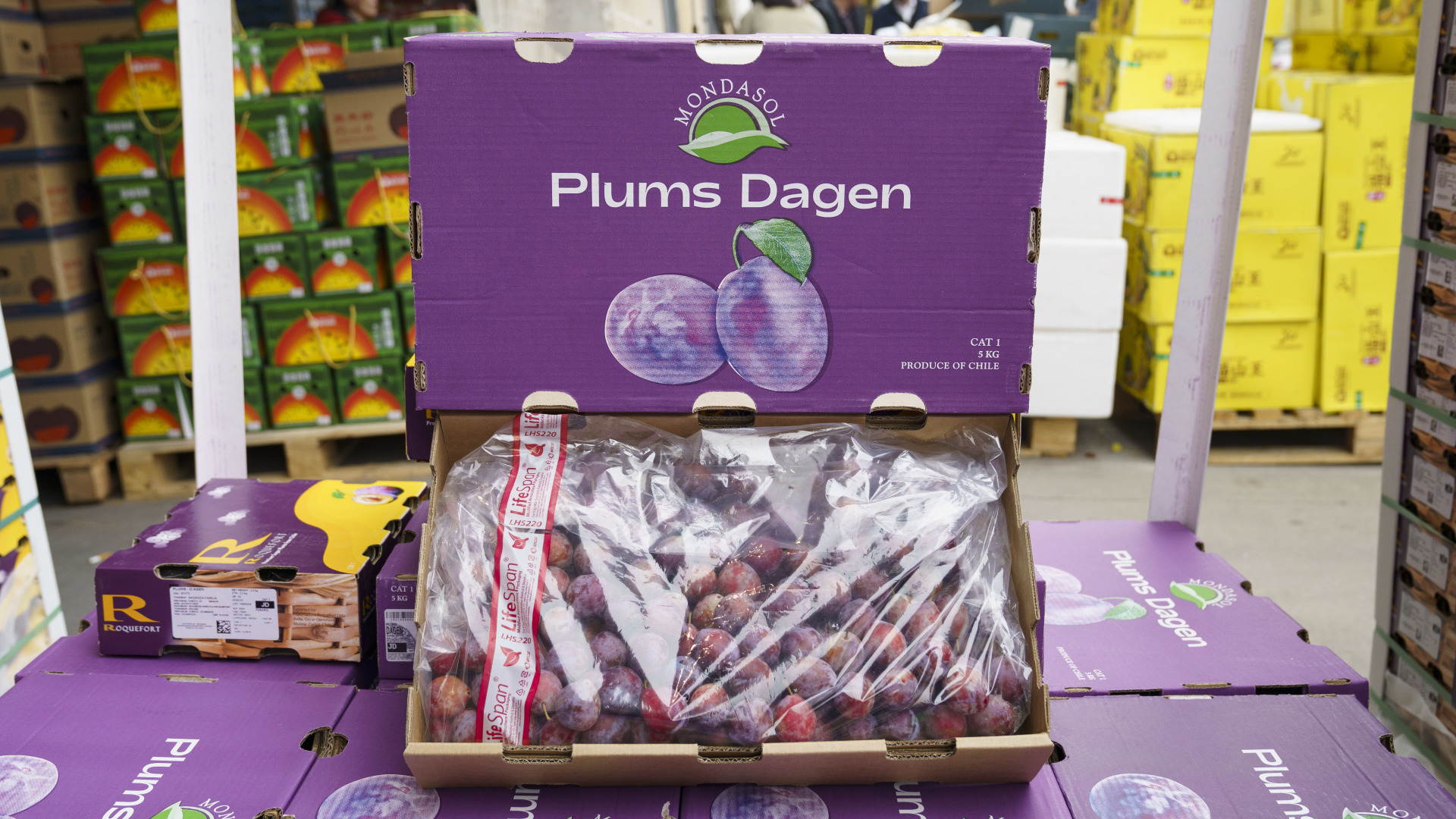
Sweet bonus points! Chilean plums from the southern hemisphere, with small pits and thick flesh, are sweet and refreshing!
Release time:
2024-03-01
Author:
Source:

As is well known, Chile is a major exporter of fruits, and Chilean cherries occupy an important position during China's Spring Festival every year. In fact, there is another fruit in Chile that is sweeter than cherries, and that is Chilean watermelon. The Chilean Simedo currently available in the market is air freight, with a slightly higher price. In March, there will be a large amount of sea freight, and the price will tend to be more affordable. However, the shelf life of prunes is relatively short, with only one month of golden appreciation period each year. Friends who like to eat prunes should seize the opportunity!
As a major global exporter of prunes, Chile has a nearly 70 year history of prune cultivation, covering an area of approximately 15000 hectares. Chile is located in the southwest of South America, at the western foot of the Andes Mountains. The unique geographical environment of being backed by mountains and facing the sea provides a natural barrier for the cultivation of Chilean fruits. In addition, natural glacier water irrigation and fertile volcanic soil provide a unique environment for the growth of Chilean plum trees.
The seasonal climate in Chile is exactly opposite to that in the Northern Hemisphere. In China's sunny spring of March, it is the season when Chilean plums mature and are widely available. At this time, you can enjoy the sweetness of 25 °+! Ximei is originally from France, and when ripe, it turns purple and is covered in a light layer of fruit powder, resembling a charming "Zixia Fairy" with a slight touch of pink. This layer of fruit powder is formed by the natural secretion of fructose during the growth process of prunes, which has a preservative effect on the fruit. Adequate fruit powder means that prunes are fresher.
The sugar content of cherries is around 20 degrees, while that of prunes can reach over 25 degrees, which is truly sweeter than cherries. Under the nourishment of nature, Chilean plums have plump amber flesh that can be eaten both soft and hard. When eaten hard, they are crispy, sweet, and juicy, while when eaten soft, they are sweet and glutinous. Sharing this unique sweetness with friends on the warm spring day is also a good choice. Chilean plums are rich in vitamins, minerals, fruit acids, and various dietary fibers, with low calories, and are also known as "goddess fruits", which are deeply loved by consumers. At Chen's Sun Gate, Chilean sume has already drifted across the sea, waiting to meet you!